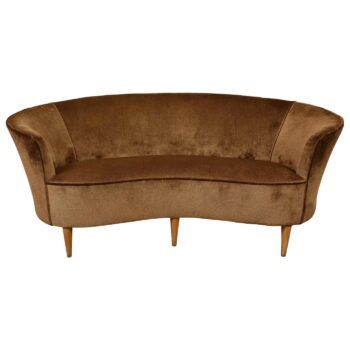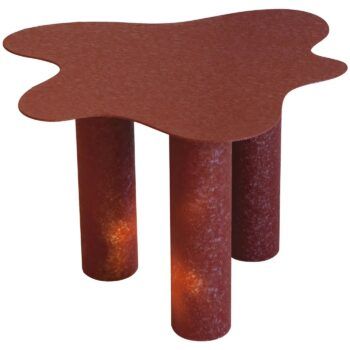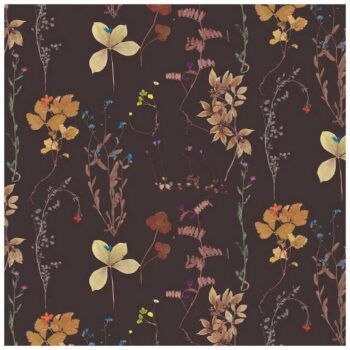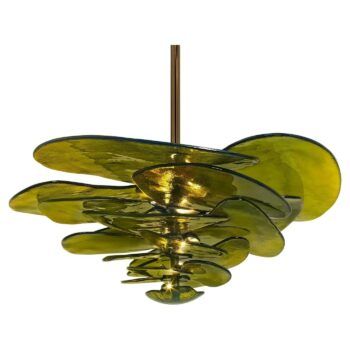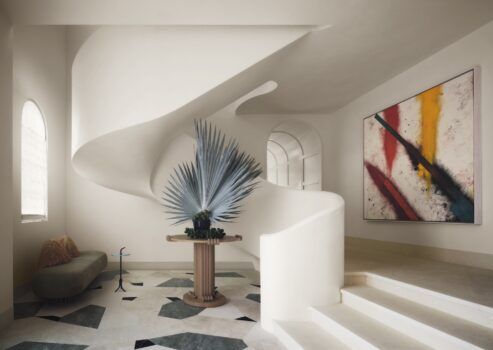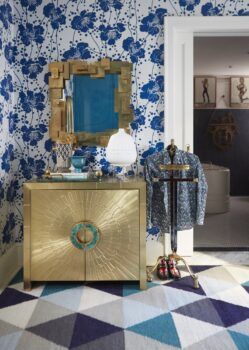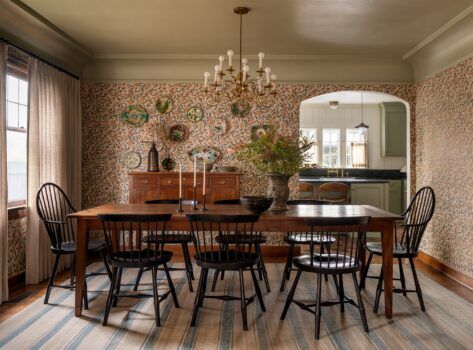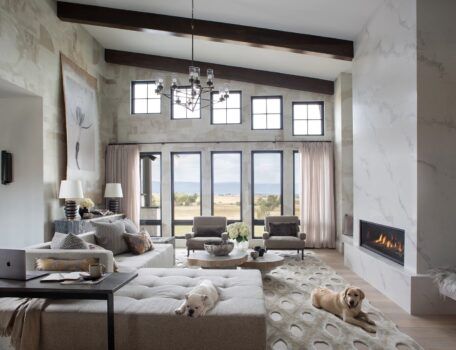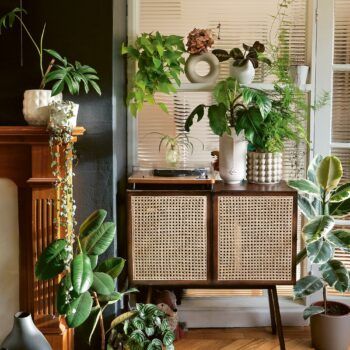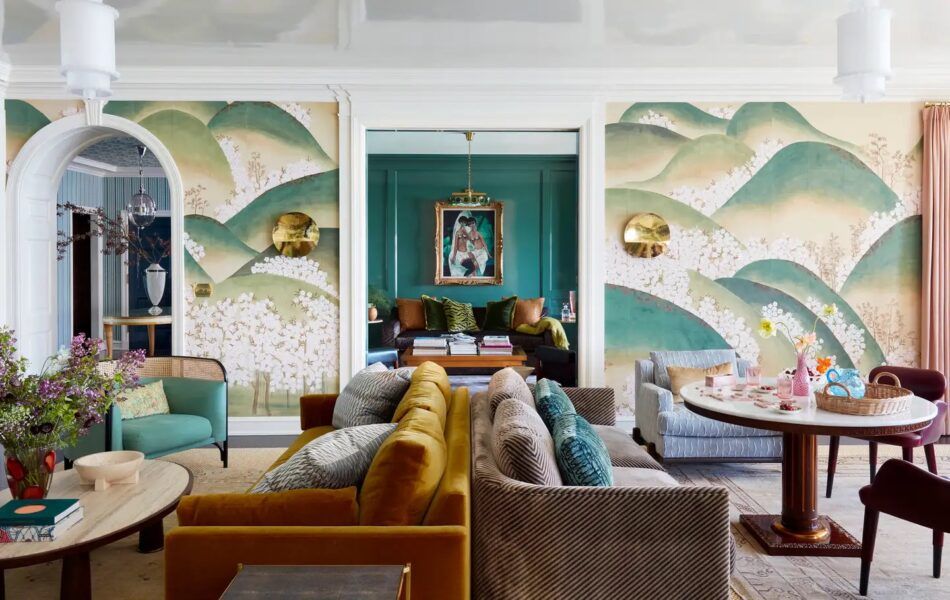
It was bound to happen sooner or later. Did you really think minimalism would reign supreme forever? The results of the 1stDibs Designer Trends Survey for 2025 are in, and it seems that many industry creatives are planning to throw cool restraint out the window in the months to come.
This time around, the annual poll, now in its eighth year, indicates a swing toward sophisticated, no-holds-barred maximalism, which a plurality of designers (33 percent) say is the way they’ll go in ’25. An equal percentage cited eclecticism as their guiding principle du jour. Together, these two unabashedly over-the-top aesthetics bumped minimalism, mid-century modernism and Scandinavian modernism from the top perches they’ve commanded in recent years — a sea change, to be sure.
The most-favored colors in designers’ swatch collections are shifting, too, with chocolate brown and burgundy nearly doubling in popularity among our survey respondents in two short years.
So, expect to see fewer pale rooms studded with mid-century icons. Get ready for rich colors, bold patterns, exuberant wall treatments, gargantuan chandeliers and an artful mash-up of furnishings both vintage and new.
Some forward-looking designers are ahead of the curve. Summer Thornton designed a dream living room for a pair of empty nesters in a distinguished 1920s building on Chicago’s lakefront with showstopping de Gournay wallpaper and luxe, varicolored upholstered pieces. “My clients are tired of the stripped-back, bare-bones house with the sinuous white sofa and a few ‘approved’ vintage designer chairs,” Thornton says. “I love nothing more than a good mix of eras, colors and materials, as long as the look is cohesive and elevated.”
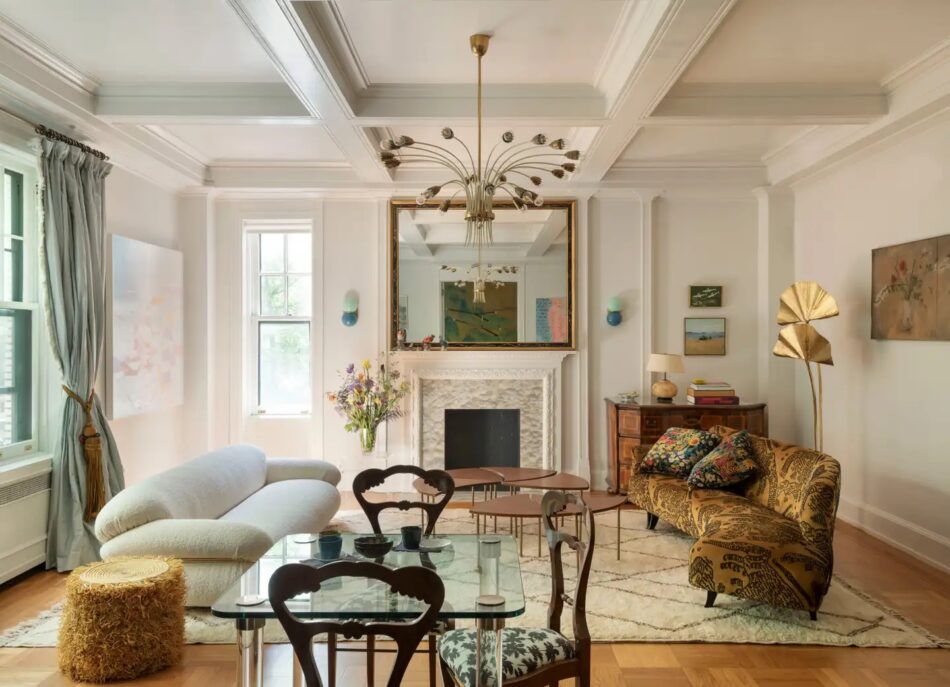
Britt Zunino, of Studio DB, agrees that old notions of style and decorum no longer apply. “Nothing is off-limits. It just has to be special,” she says. “A surge in post-pandemic travel exposed people to global design. Our clients are craving unique, personalized homes that are conversation starters.” This is an apt description of the studio’s concept for an eclectic Manhattan living room, an architecturally distinguished space layered with family heirlooms, contemporary art and treasures found in African markets.
To paraphrase Gertrude Stein, a trend is a trend is a trend — not a final farewell to once-beloved styles and design icons. They’re likely to come roaring back one day, as animal prints, following fashion, are predicted to do in 2025. But one of the joys of interior design is keeping things fresh. Drill down with us into the stats as we reveal what 1stDibs designers find exciting and of-the-moment, which rooms their clients plan to tackle in 2025, where they’ll do their sourcing and much more. Forecast ahead.
1. Maximalism Is In
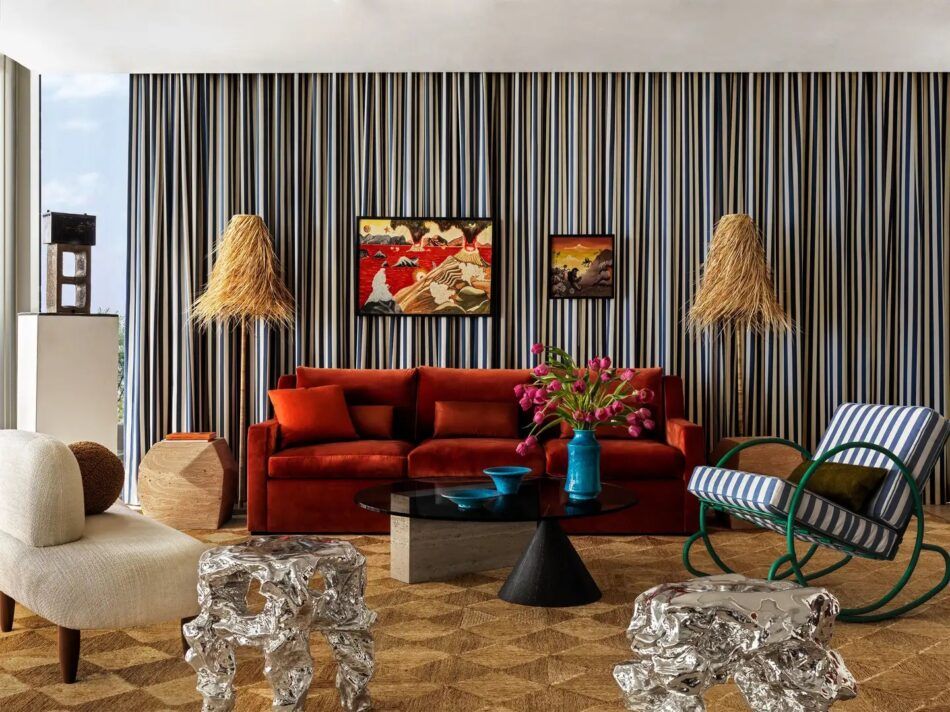
When it comes to interior design aesthetics, shifts in taste tend to happen incrementally, over time. This was not one of those years.
Mid-century-modernism fatigue finally set in, with just 20 percent of survey takers giving MCM most-favored status going into 2025, down dramatically from its robust 40 percent share the year before. Organic modernism (think natural materials and nubby textiles) still has loyal adherents, coming in at 31 percent for 2025, but Scandinavian modernism and minimalism fell significantly, from 37 percent and 34 percent, respectively, in last year’s survey to 21 percent each in the latest go-round. Meanwhile, such former darlings as postmodernism and rusticity rated a yawn for the year to come, winning votes from 5 percent or less.
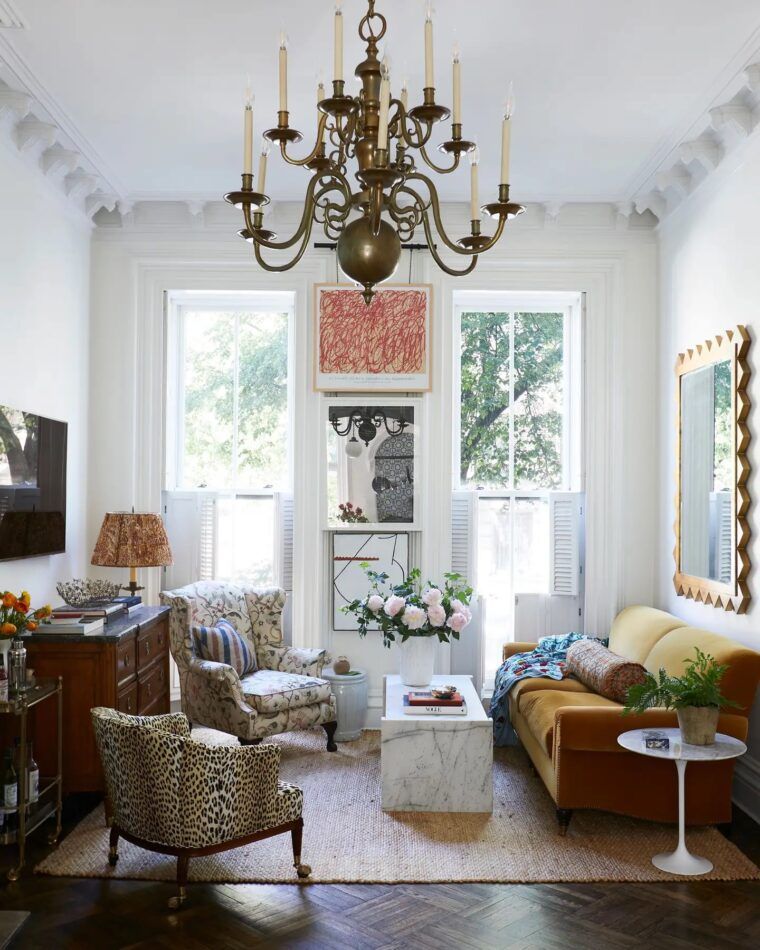
So what’s on top for 2025? That would be maximalism, name-checked by 33 percent of designers, and that glorious catch-all, eclecticism, which also won the hearts of a third of survey respondents.
Charlap Hyman & Herrero anticipated the trend in a Miami Beach living room, maximalist to the max, with wall-to-wall stripes, a redder-than-red sofa, wild thatched lamps and crumpled side tables shiny as aluminum foil. In Brooklyn, Christina Nielsen did eclecticism as a casual, cheery mix in a townhouse parlor, combining floral- and leopard-print chairs, a traditional wood dresser, modernist coffee and side tables, an oversize brass chandelier and framed floor-to-ceiling art.
2. The 1920s and ’30s Dazzle Again
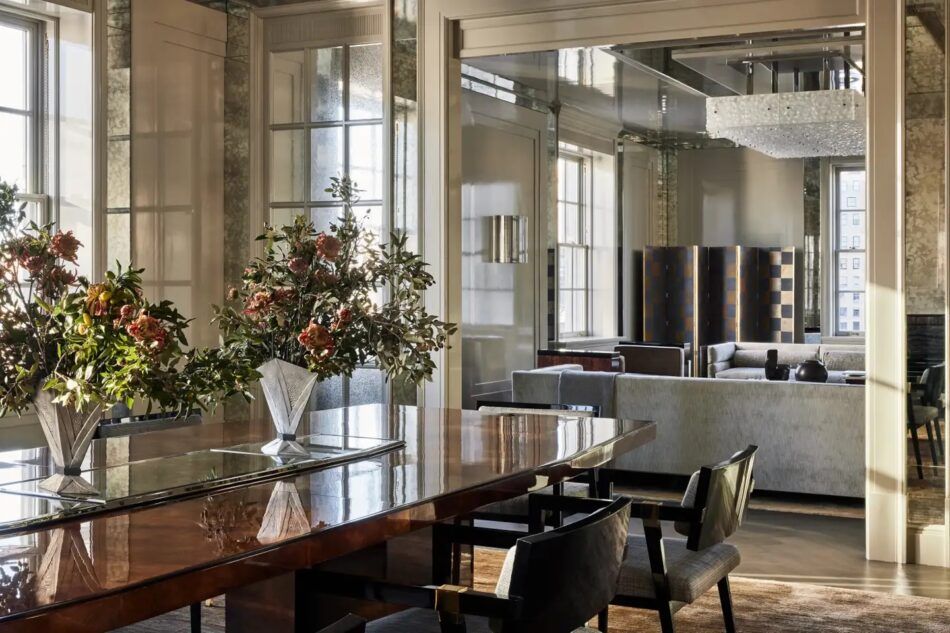
The Jazz Age is the period most likely to return to popularity, say 28 percent of designers, citing the 1920s and ’30s as the decades they’ll draw upon for inspiration in 2025. Among respondents outside the U.S., the affinity is even stronger, with 32 percent embracing the era.
Dan Fink gave the look a 21st-century twist in a New York penthouse dining room and living room, a glamorous take on the geometric architecture and design of the Deco era, all gleaming metallics and reflective surfaces.
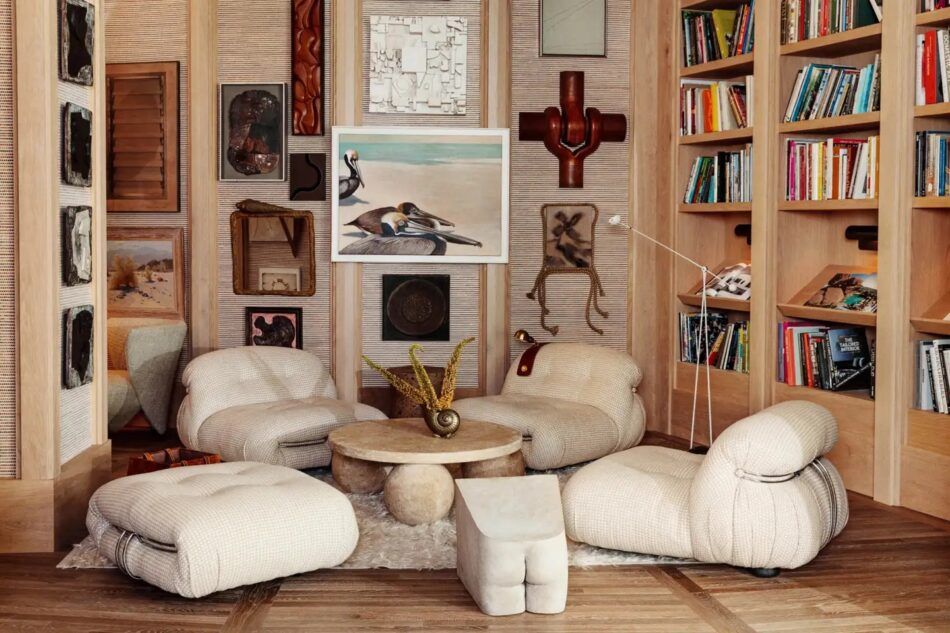
The earth-toned 1970s, which generated the most enthusiasm in last year’s survey, are still way up there in popularity. The decade came in just shy of first place, favored by 26 percent, down one point from last year and two from the year before. Design star Kelly Wearstler channeled the laid-back decade in the lobby of the Santa Monica Proper Hotel, deploying low lounge seating and a display of unconventional art and artifacts with an organic, beachy vibe.
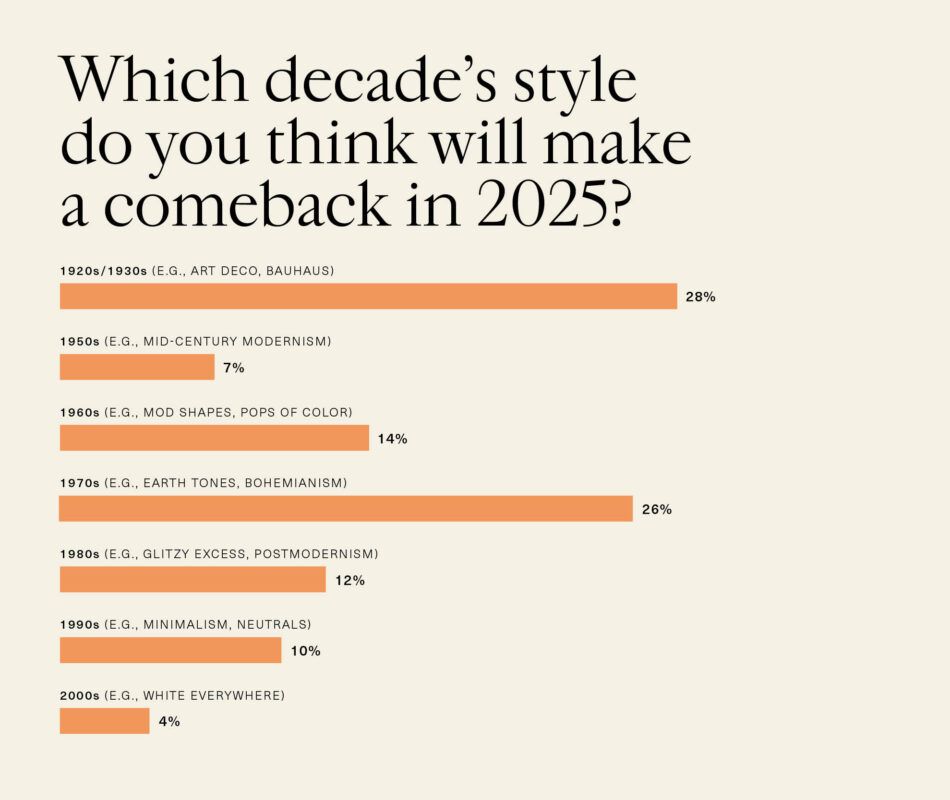
Decidedly not hot for the new year: the white-on-white look of the 2000s, languishing in the low single digits.
3. Chocolate Brown Takes the Cake
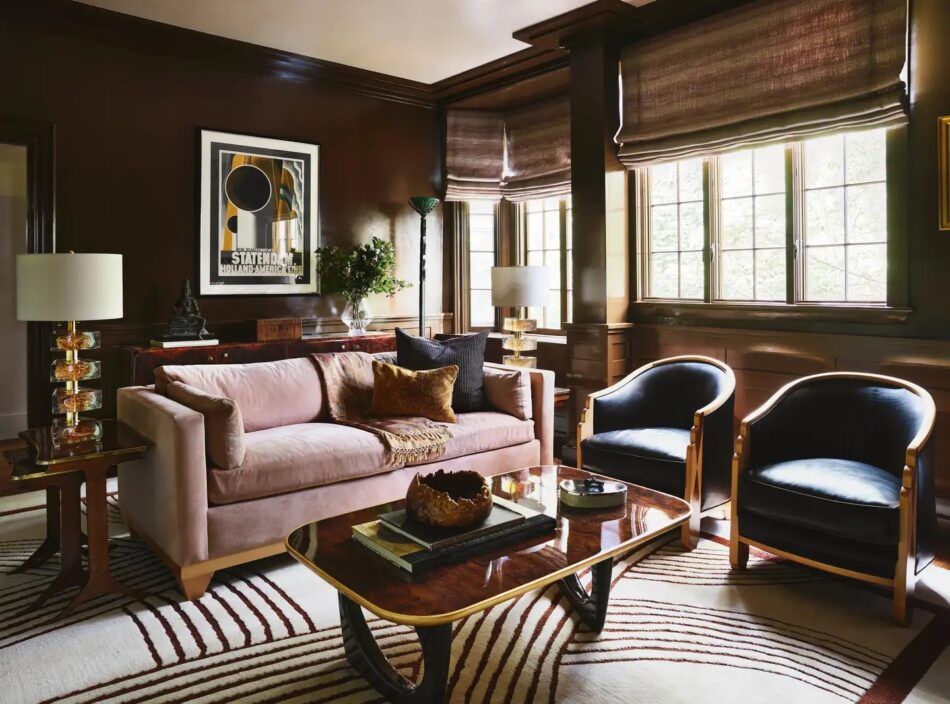
Deep reds and browns, fashion favorites for some time, have migrated to the domestic realm. Rich chocolate brown dominates; it’s far and away the fave shade for 2025, with 32 percent of designers planning to use it, nearly double the 17 percent of two years back. A cushy Nina Farmer–designed study in Cambridge, Massachusetts, feels like a pot of chocolate fondue, its luminous brown walls and moldings serving as backdrop for an array of furnishings with a British-colonial–meets–Art Deco spirit.
Dark green/emerald, named by 22 percent of designers as a top color choice for ’25, is still a solid winner among jewel tones, down a mere point from the two prior years.
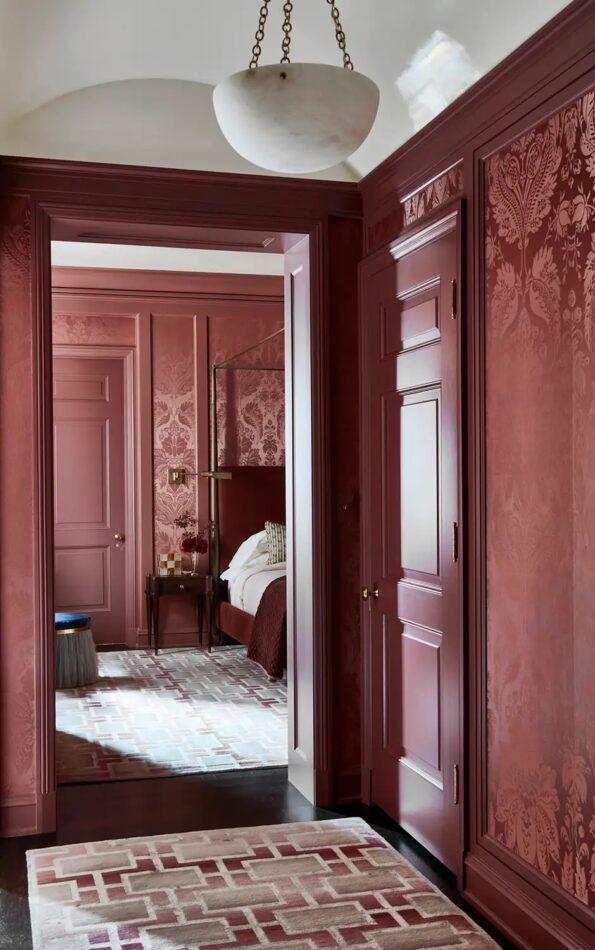
Dark red/burgundy continues its rapid upward trajectory, from 12 percent two years ago to 20 percent for 2025. Back in Chicago, Thornton wrapped the main bedroom of her lakefront project in rose with deep ruby accents, capturing the color moment.
On the cool side of the color wheel, serene pale greens and blues remain up there in designers’ estimations. Light green and sage may have peaked last year at 26 percent, slipping to 19 percent for 2025, while light blue, sky blue and robin’s-egg blue have risen from 14 percent to 19 percent in the past couple of years.
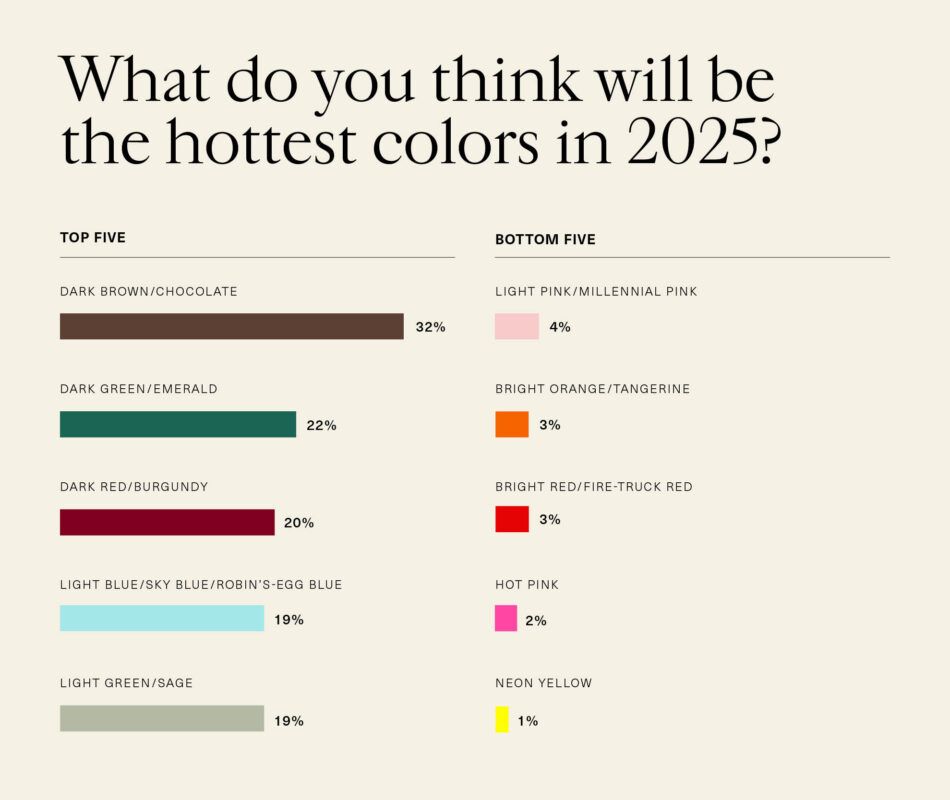
On a downhill slide are muted hues like dark yellow and mustard, sitting at 15 percent in the current survey, a five point fall from last year. Same goes for dark blue and navy, endorsed by 11 percent of respondents, a three point drop. Dark gray and slate found favor with only 5 percent this time around, as opposed to 10 percent last year.
Brights and neons are also on the wane. Barbie pink, in particular, is so last year, falling from 6 percent to 2 percent for 2025.
4. Patterns Liven Things Up
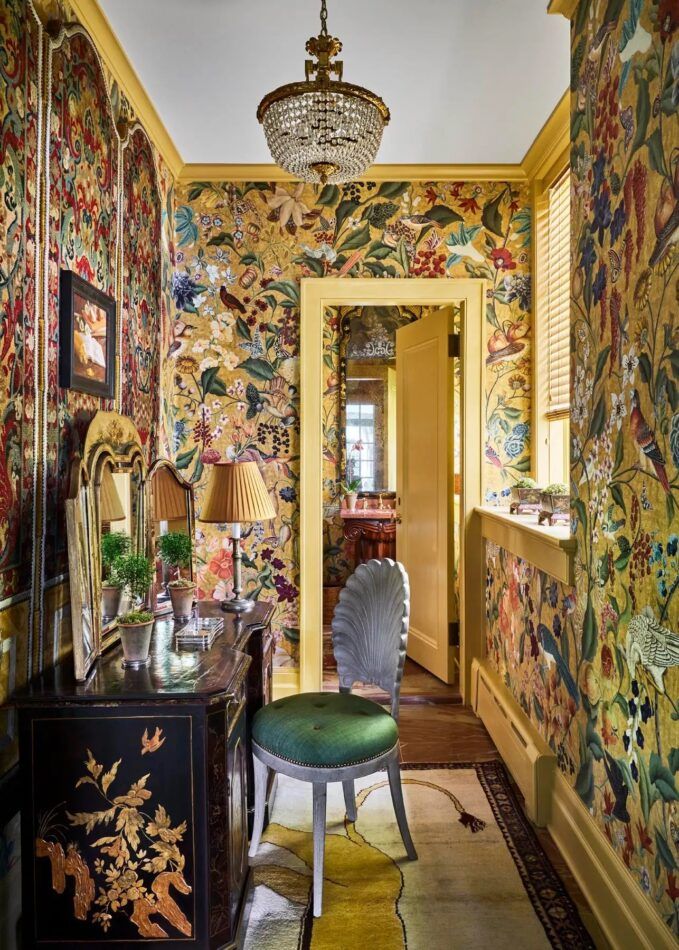
In the domain of prints and patterns, two of the top motifs from years past — bold/large-scale prints and florals — are tied for first place heading into 2025, the former down a few points from last year and the latter up a couple. Each got shout-outs from 15 percent of designers, more than any other option (including organic motifs, stripes and geometric prints), with plaids, checks and polka dots among the least favored, by 3 percent or fewer of respondents.
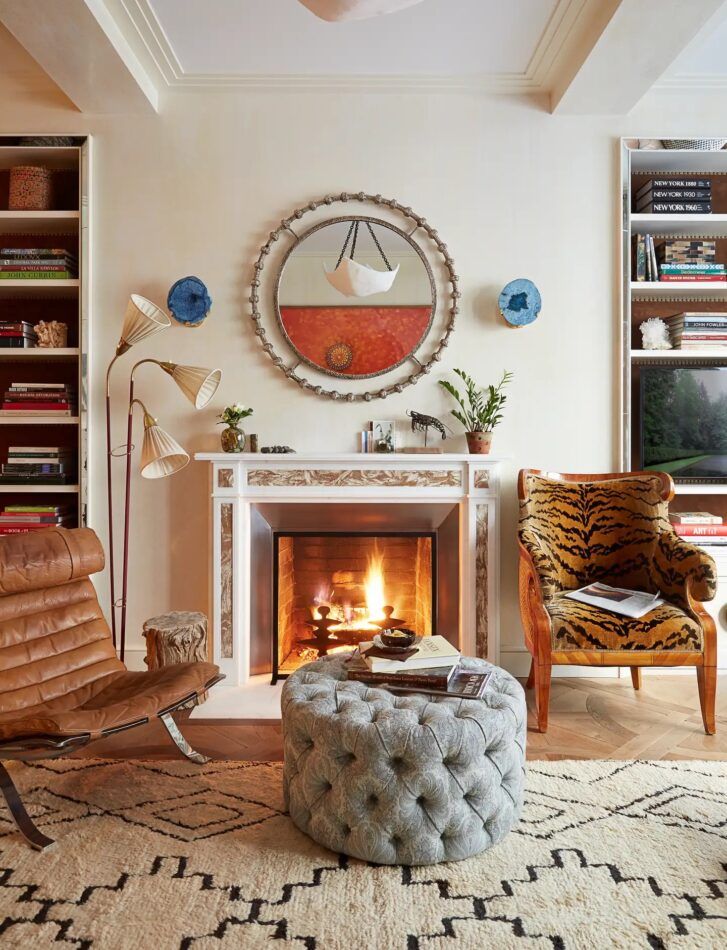
Leopard and other animal prints saw a modest rise, from 4 percent last year and the year before to 6 percent for 2025, with a more pronounced surge, to 10 percent, occurring among respondents outside the U.S. With fashion houses like Dior and Versace using stylish, sensual animal prints in pivotal roles these days, expect to see them popping up in home furnishings more often. Case in point: the tiger-print armchair demanding attention in an eclectic urban sitting room by Markham Roberts.
Liberal use of prints and patterns dovetails nicely with the current lean toward maximalism. Take a vivacious Upstate New York hallway by Redd Kaihoi: Why choose between a gold-toned floral extravaganza and a Caucasian-rug-like pattern for the walls when you can have both?
5. Tech Goes Stealth
Claiming the top spot among special design features and elements for ’25 is discreet technology — dealing with the elephant in the room, as it were. A meaningful 35 percent of survey respondents anticipate coming up with clever ways to hide modern-day necessities like flat-screen TVs, gaming consoles and charging stations.
In terms of visible features, each year, it seems, the creative tacks designers take get bolder and more interesting. Indeed, colorful painted murals (28 percent) and patterned wallpaper (26 percent) — including on the ceiling — round out the top design elements on track to make striking statements in 2025.
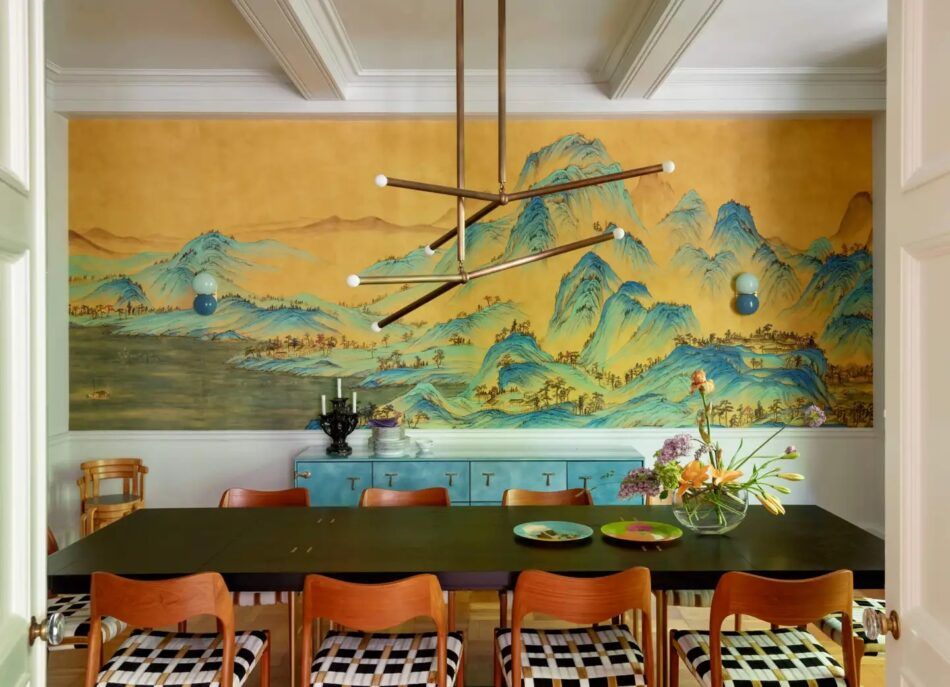
The dining room of a New York apartment by Studio DB demonstrates the power of this approach, with its vivid blue-and-yellow panoramic wall covering, reminiscent of 18th-century Japanese woodcuts.
Other decorative treatments, including paneling, ceiling beams and glass bricks, have firm followings in the low 20s and teens, while once-desirable features like living plant walls (5 percent) and sliding barn doors (3 percent) have had their day, at least for now.
6. Ancient Materials Still Appeal
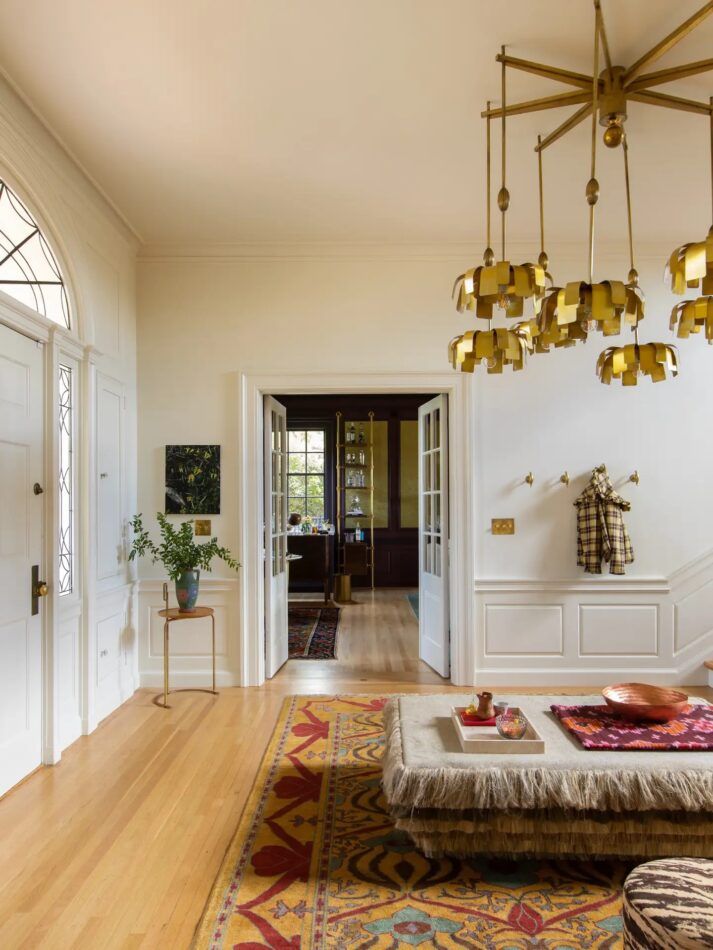
Bronze and brass have been around since the dawn of history without losing their luster. Suppliers of instant warmth and gravitas, they currently share the top spot for most-favored material, with each metal backed by 18 percent of designers for 2025.
Lauren Geremia is on it already, deploying an oversize brass chandelier to great effect in an eclectic San Francisco Bay Area entry hall. Sourced from a Paris flea market, the fixture coanchors the room along with a unique fringed bench, both sizable enough to hold their own against the architecture’s generous proportions. “The light fixture fits perfectly into the big brass story that carries through the house,” Geremia says. “It feels feminine and playful, and it’s fun to look at from below.”
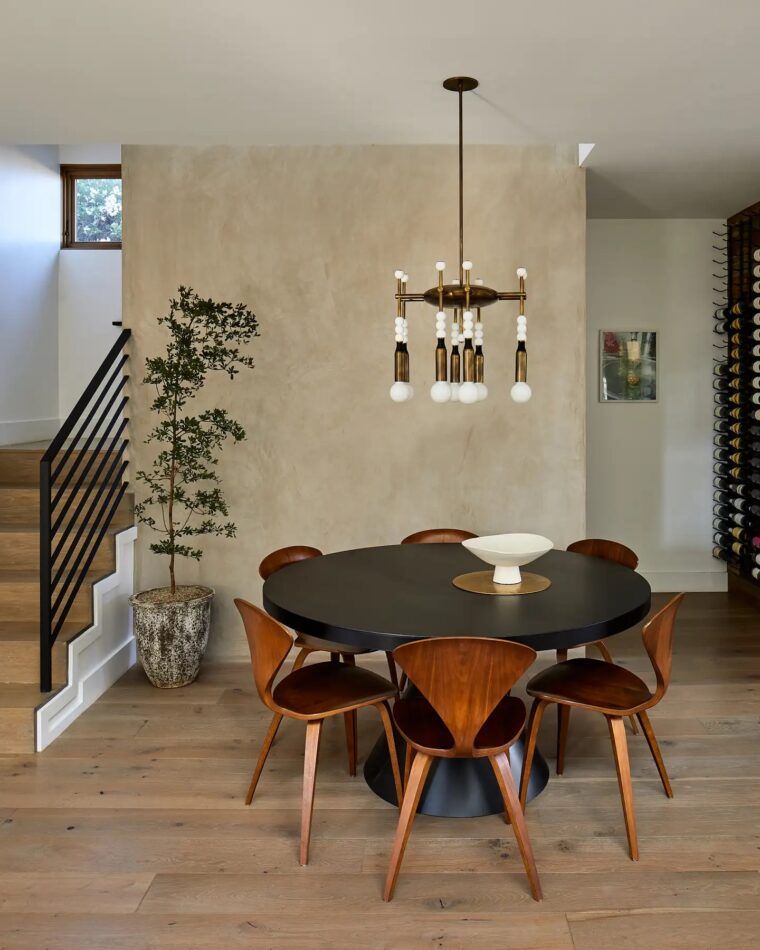
Once again, designers predict we’ll be seeing lots of limewash, a specialty paint treatment with a chalky texture that has also been used for centuries. Valued by industry professionals for its depth and luminosity, limewash maintains its place among the top three materials, with a thumbs-up from 17 percent of survey respondents.
Proem Studio incorporated both trends in a Venice Beach dining room, limewashing the walls and hanging a warm metallic chandelier above a table ringed with Norman Cherner’s narrow-waisted chairs for Plycraft, a mid-century design too good to fade away.
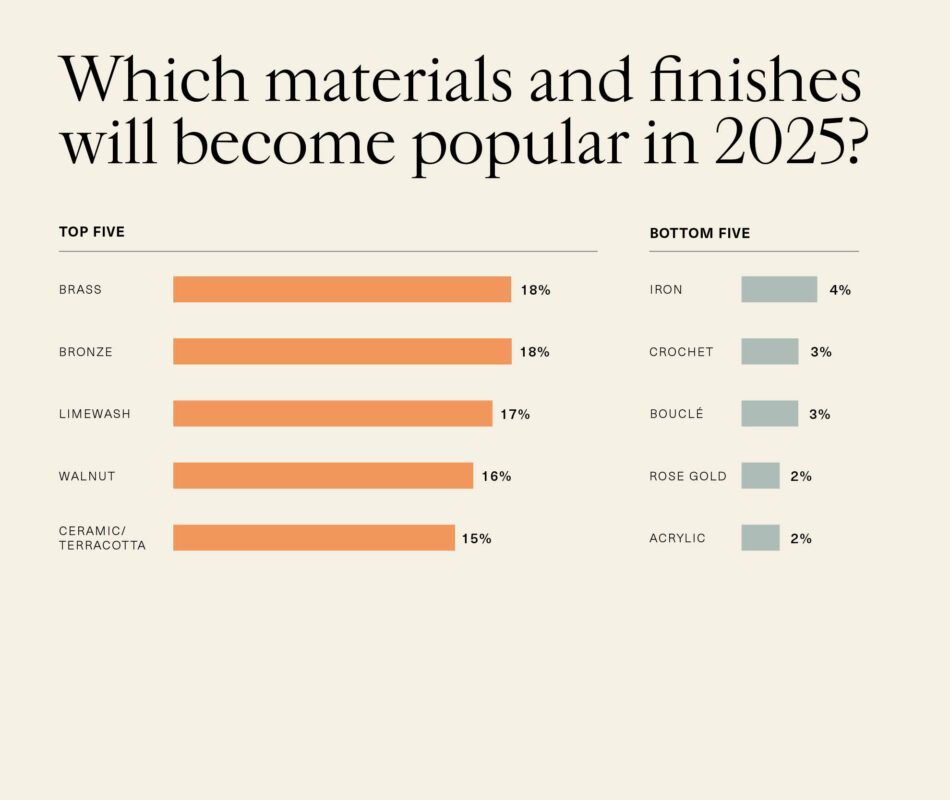
Once super-popular, ceramic/terracotta declined from 28 percent two years ago to 15 percent in the latest survey, while blonde wood slid to 9 percent from an enthusiastic 24 percent the year before last. Clearly on the outs: bouclé, rose gold and acrylic, each at or under 3 percent.
7. Curvy Shapes Are Furniture Favorites
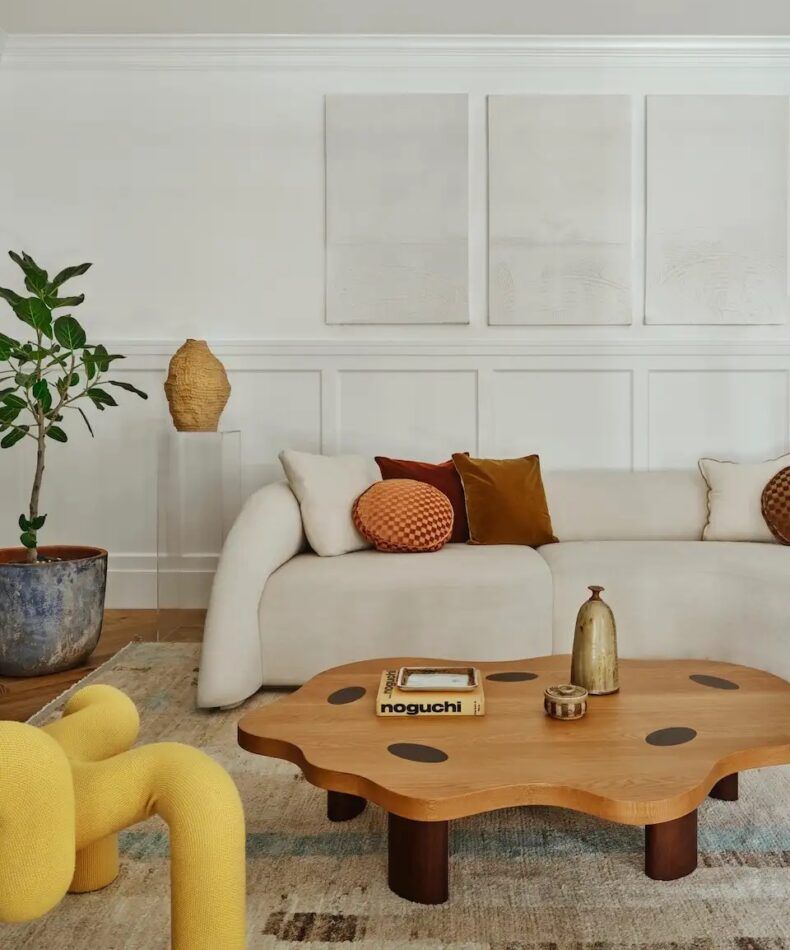
Curves are king when it comes to furniture shapes for 2025, with boldly curvaceous and irregular silhouettes claiming 47 percent of votes. A Los Angeles living room by Deirdre Doherty — with its unusual sofa, protoplasmic coffee table and sculptural yellow chair — is a prime example of the look in action.
From a long list of other decor options that included plants, daybeds and extra-large mirrors, oversize pendant lighting scored big among 27 percent of respondents. Cane, wicker and rattan came in third, with 24 percent keen on using them in 2025.
On the most not-wanted list for the new year: indoor swings and La-Z-Boys/recliners.
8. Murano Glass Shines
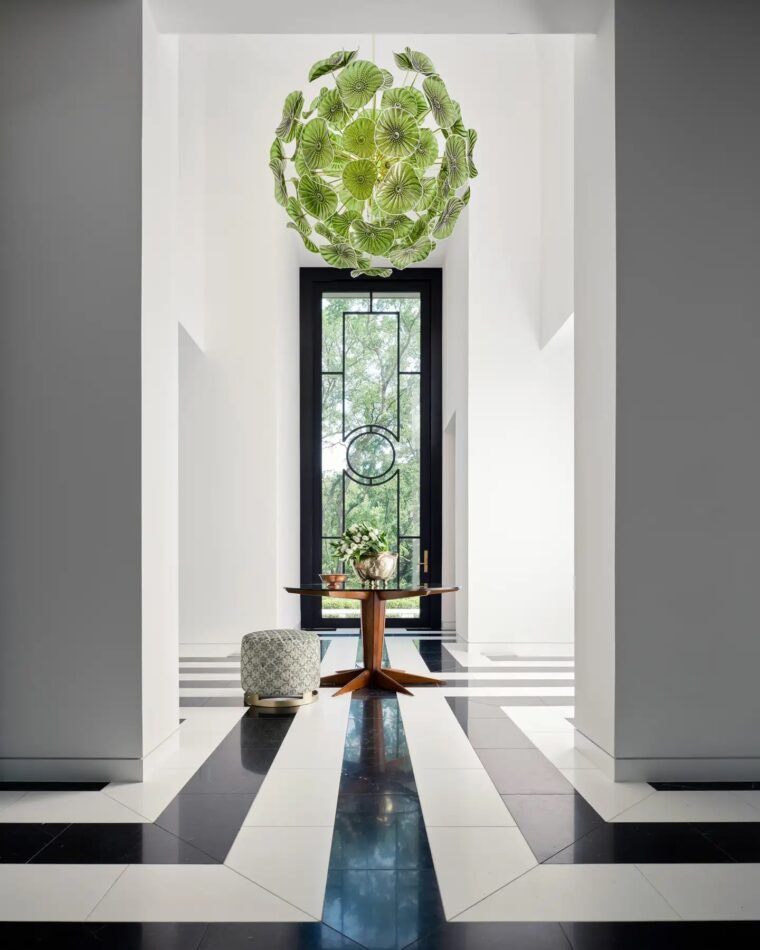
The big lighting surprise going into ’25 is the notable climb of Murano-glass pendants and chandeliers on the list of most popular lighting icons. The output of the centuries-old Venetian glassworks jumped in favorability from 19 percent last year to 27 percent in the latest survey, with a remarkable 39 percent of designers outside the U.S. embracing the style. You couldn’t ask for a more powerful design statement than the Murano chandelier composed of handblown chartreuse glass discs selected by designer Deborah Walker for the formal entry hall of a Fort Worth, Texas, manse.
Isamu Noguchi’s paper Akari lanterns came in a sturdy second, with 16 percent of respondents looking forward to using them in 2025, up three percentage points from the prior year.
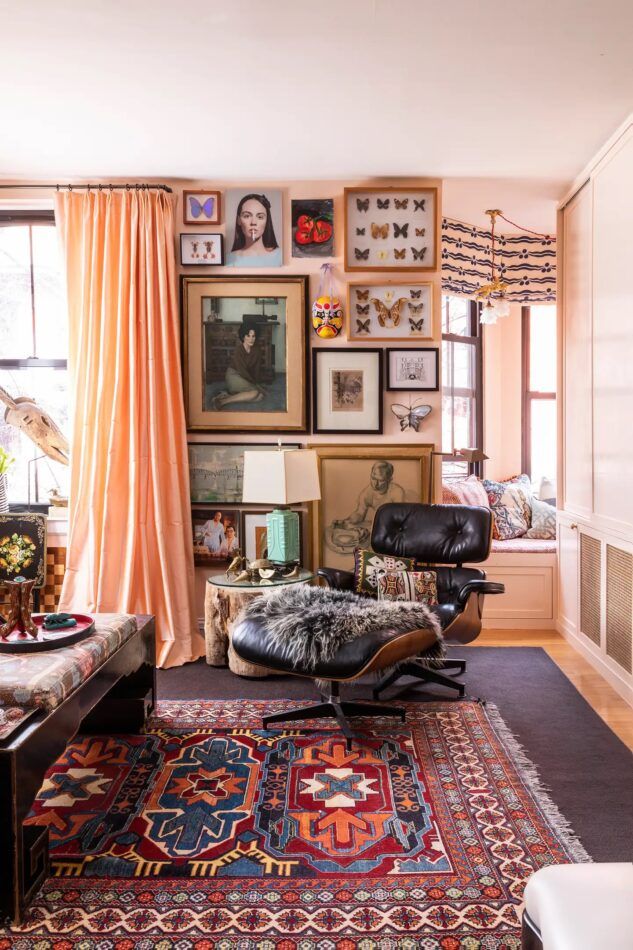
Among seating icons, the indomitable Eames lounge chair and ottoman remain on top for 2025, surging to 23 percent after last year’s dip to 15 percent. They’re an American obsession, twice as popular stateside as elsewhere on the planet. Designer Erin Fearins, of Studio SFW, made a place for them within the joyful jumble of lovingly collected artwork and travel souvenirs in her family’s maximalist Brooklyn living room, proving their stylistic versatility.
Vladimir Kagan’s sinuous Serpentine sofa held steady in second place, where it’s been for the past couple of years, endorsed by 13–14 percent of respondents. But at least one time-honored design staple got knocked off its pedestal in our latest survey. Hans Wegner’s Wishbone chair dropped four points in three years, to 7 percent, supplanted in third place by Kaare Klint’s Safari chair, a 1933 design that slipped into the survey for the first time this year at 8 percent.
Barely making a dent in the latest poll were Giancarlo Piretti’s Alky lounge chair and Marco Zanuso’s Lady chair; ditto the once-ubiquitous Anglepoise task lamp.
9. Sourcing Habits Hold Steady
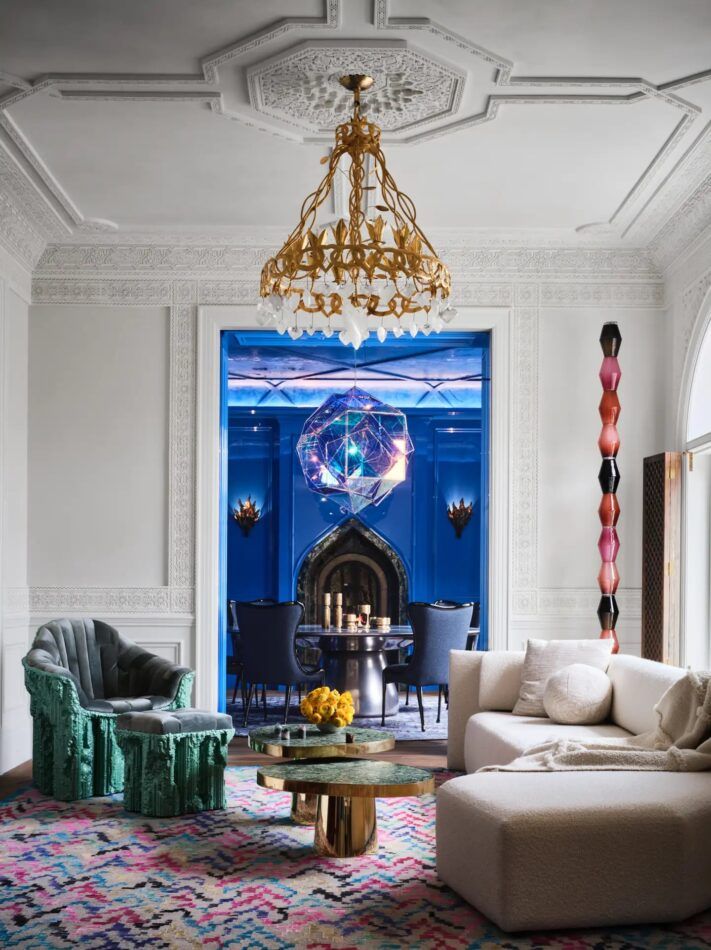
Over the past five years, the annual 1stDibs Designer Trends Survey has presented a pretty consistent picture (with minor ups and downs) of how designers’ sourcing of furnishings old and new, artisanal and machine-made breaks down by period and type of manufacture.
A whopping 86 percent of designers will spring for custom work in the year ahead, and 85 percent will opt for contemporary items in current production. In their ongoing quest for one-of-a-kind results, a hefty 81 percent of designers plan to seek out vintage 20th-century material, while 76 percent will hunt for pieces made since 2000. A healthy 62 percent — more than in the previous four years — will shop for antiques for their clients in 2025. “Platforms like 1stDibs have educated people about design history,” says Studio DB’s Zunino. “They’re now more comfortable purchasing antiques and vintage furniture.”
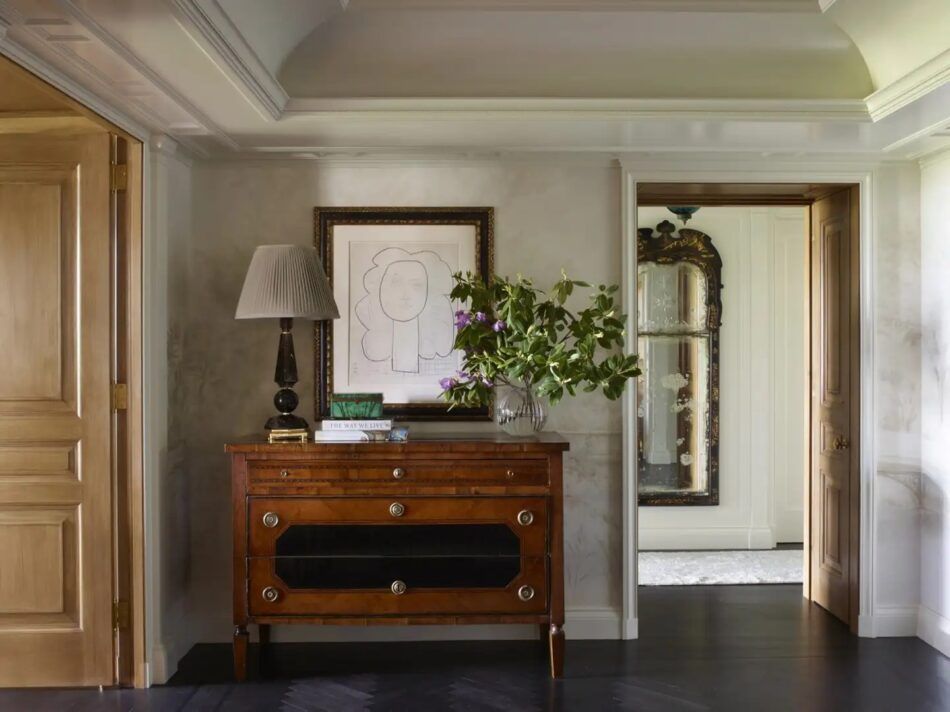
A deeper dive into the stats reveals that 24 percent of survey takers plan to furnish with more Art Deco pieces in 2025 than in the past, with the same percentage putting more contemporary and postmodern (1960s-to-1980s) pieces on the coming year’s shopping list. That’s somewhat greater than the number who are leaning toward brutalist (20 percent) or mid-century modern (19 percent) furnishings, and a far larger slice than baroque (7 percent), Louis XV (6 percent) or Victoriana (5 percent). Artisans take heart: 62 percent of designers expect to favor artisanal production over mass manufacture in 2025.
Given the range of styles in play for 2025, the upshot is likely to be highly original rooms, like the Nicole Hollis–designed haute Bohemian living room of a San Francisco grand dame in the city’s Haight-Ashbury district, kitted out with an avant-garde assortment of contemporary and artisanal furnishings and lighting. Across the country, the vaulted ceiling in the entry hall of a pied-à-terre on New York’s Central Park cried out to designer Tammy Connor for a traditional wooden bureau and table lamp, which she paired with of-the-moment limewashed walls.
10. Paintings Still Prevail
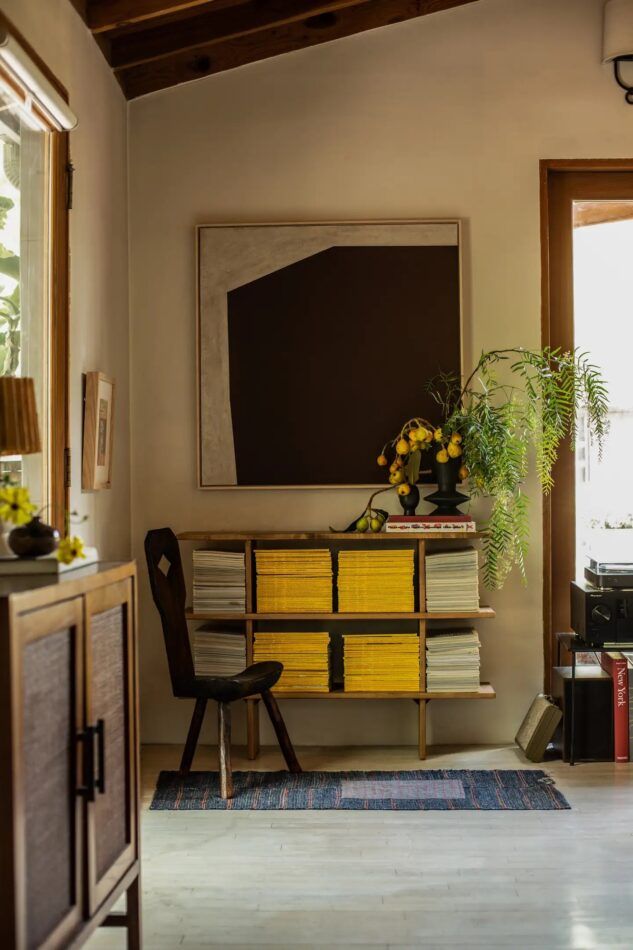
Paintings and sculpture lead the way in anticipated art buying, with 46 percent and 41 percent of designers, respectively, planning to display more works in those categories in 2025 than in the past. About a third of respondents intend to deploy more drawings and photographs. Interest in NFTs and digital artworks continues to cool; 71 percent of designers say they don’t use them. About two-thirds say they don’t employ ephemera or posters.
Although survey takers favor abstract (48 percent), contemporary (39 percent) and modern art (36 percent), each is a few points down from three years ago. This might just be the time to invest in landscapes and portrait/figurative painting, both hovering at 33 percent, with room to grow.
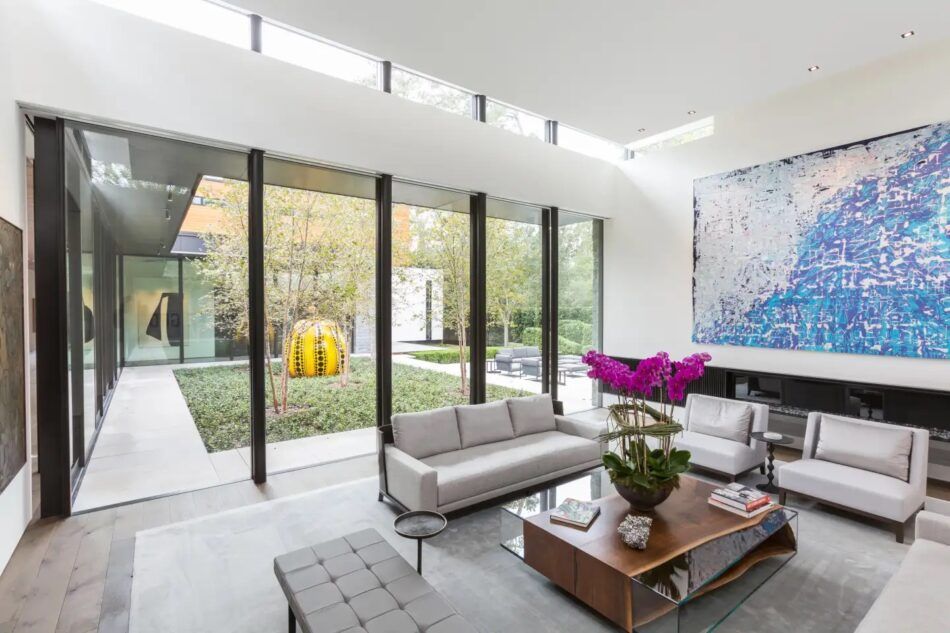
It only takes one striking work of art to make a room. Witness the modernist canvas in the welcoming entry hall of a Los Angeles home by LP Creative, or the huge abstract lending a grounding shot of color to the glass-and-steel architecture and neutral furnishings of a Texas living room by designer Ann Wolf.
Industry Outlook
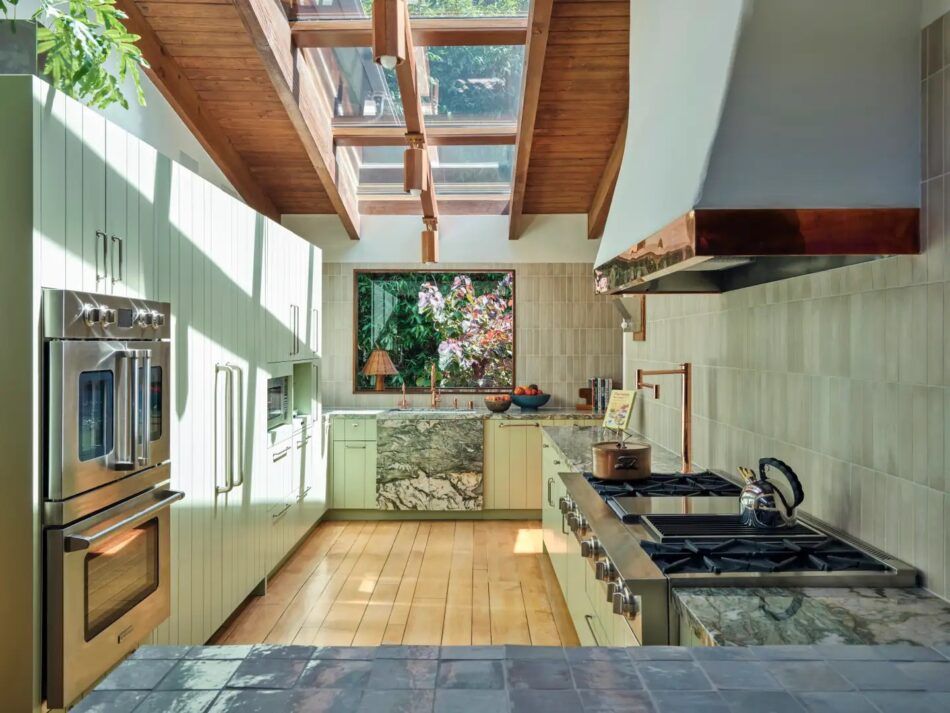
Effects of the pandemic continue to reverberate throughout the interior design industry. 1stDibs survey respondents were overall less optimistic about business volume for the coming year than they were in the early part of this decade, when enforced staycations and unexpected moves had clients busily making home improvements across the board.
The results of those efforts were apparently enduring, as the percentage of designers expecting business to increase in 2025 stands at 47 percent, down a telling 20 points from our survey three years ago. Another 47 percent say the picture is likely to remain the same, and 6 percent of respondents outright anticipate quieter times ahead.
Kitchen revamps are a bright spot for 2025, with 61 percent of designers looking forward to working with clients who’ve rediscovered the joys of home cooking, up from 56 percent for both the two previous years. An enviable light-flooded Beverly Hills kitchen by Proem Studio is an assemblage of desirable elements, from warm wood and glints of copper to assertively veined marble and expanses of handmade tile.
Living rooms are ripe for reimagining, too, with 51 percent of respondents expecting such commissions in ’25, up from 48 percent last year and 45 percent the year before.
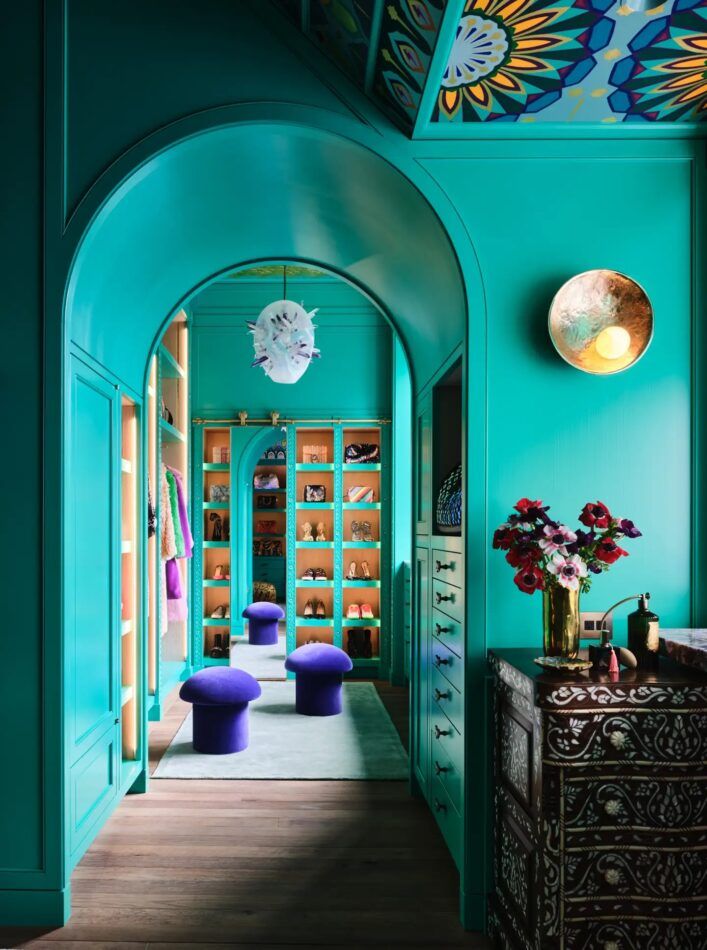
In the fanciful if-money-were-no-object category, designers’ most-recommended “bonus” space for 2025 would be an extra-spacious walk-in closet (53 percent), maybe akin to the luxe fantasia conjured by Hollis for her Haight-Ashbury project. Guest suites (50 percent); second kitchens, whether outdoor or scullery (45 percent); and libraries (41 percent) also top the why-not list, while interest in home bowling alleys has curiously doubled since last year’s survey — going, that is, from one percent to two.
More designers are getting comfortable with the use of AI-powered tools in their practices. A full 40 percent percent are willing to let artificial intelligence help out in ’25, compared with just 26 percent last year. The resisters group correspondingly shrank, from 37 percent last year to 26 percent in this year’s survey, while about a third are still undecided on the matter.
On the subjects of sustainability and DEI requests, 43 percent of designers expect projects involving the former in 2025, and 23 percent the latter.
Survey Methodology
1stDibs’ annual online Designer Trends Survey, which began in 2018, assesses emerging trends in the field of interior design, tracking designers’ thinking on such subjects as project mix, styles, motifs, colors and sourcing.
The latest survey, conducted globally in July and August 2024 by Surveys & Forecasts, LLC, a strategic research consultancy based in South Norwalk, Connecticut, tabulated responses from 643 interior designers registered with 1stDibs. Those completing the survey received $25 virtual gift certificates.
The majority of participants — 85 percent, up from 83 percent last year — were U.S.-based. Sole practitioners and designers from small companies of two to four people accounted for 71 percent. As in past years, the percentage of respondents who are business owners was high, at 78 percent. A majority of respondents (56 percent) hailed from firms in business 11 years or more and just 8 percent from companies in business two years or less. The average number of projects completed by respondents in the preceding year was about seven.
